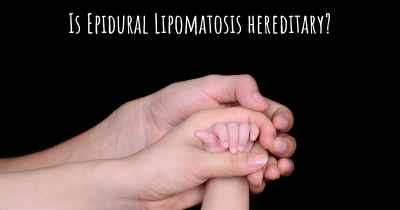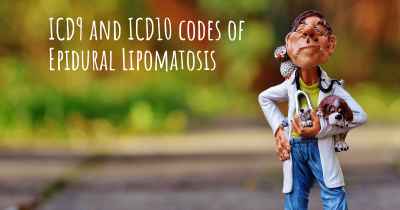Which are the symptoms of Epidural Lipomatosis?
See the worst symptoms of affected by Epidural Lipomatosis here

Epidural lipomatosis is a rare condition characterized by the abnormal accumulation of fat in the epidural space of the spine. This excessive fat deposition can lead to compression of the spinal cord and nerve roots, resulting in various symptoms. While the condition can affect individuals of any age, it is more commonly observed in middle-aged adults who are overweight or obese.
The symptoms of epidural lipomatosis can vary depending on the extent and location of the fat deposition:
- Back pain: One of the most common symptoms experienced by individuals with epidural lipomatosis is chronic back pain. The pain may be localized or radiate to other areas of the body, such as the legs or buttocks.
- Neurological deficits: Compression of the spinal cord and nerve roots can lead to neurological deficits. These may include weakness, numbness, or tingling sensations in the lower extremities. In severe cases, individuals may experience difficulty walking or even paralysis.
- Bowel and bladder dysfunction: Epidural lipomatosis can also affect the normal functioning of the bowel and bladder. Individuals may experience urinary or fecal incontinence, difficulty initiating urination, or an increased frequency of urination.
- Sexual dysfunction: In some cases, the compression of nerves in the lower spine can result in sexual dysfunction, such as erectile dysfunction or decreased libido.
- Radicular pain: Radicular pain refers to pain that radiates along the path of a nerve. In epidural lipomatosis, compression of nerve roots can cause radicular pain that travels from the lower back down the legs. This pain is often described as shooting or burning in nature.
- Difficulty standing or walking: As the condition progresses, individuals may find it increasingly challenging to stand or walk for extended periods. This can be due to the compression of nerves and the resulting weakness or numbness in the lower extremities.
- Loss of sensation: The compression of nerves can lead to a loss of sensation in the lower extremities. This may manifest as a decreased ability to feel touch, temperature, or pain in the legs and feet.
If you suspect you may have epidural lipomatosis or are experiencing any of the aforementioned symptoms, it is crucial to consult with a healthcare professional for an accurate diagnosis. Diagnostic tests such as magnetic resonance imaging (MRI) can help visualize the extent of fat deposition in the epidural space and determine the appropriate course of treatment.
Treatment options for epidural lipomatosis:
The management of epidural lipomatosis typically involves addressing the underlying cause, such as weight loss in individuals who are overweight or obese. Conservative treatment options may include physical therapy, pain management techniques, and lifestyle modifications to promote weight reduction.
In more severe cases or when conservative measures fail to alleviate symptoms, surgical intervention may be necessary. Surgical options can involve decompression of the spinal cord and nerve roots through the removal of excess fat from the epidural space.
It is important to note that the prognosis for individuals with epidural lipomatosis can vary depending on the severity of the condition and the timeliness of intervention. Early diagnosis and appropriate treatment can significantly improve outcomes and help individuals regain their quality of life.








